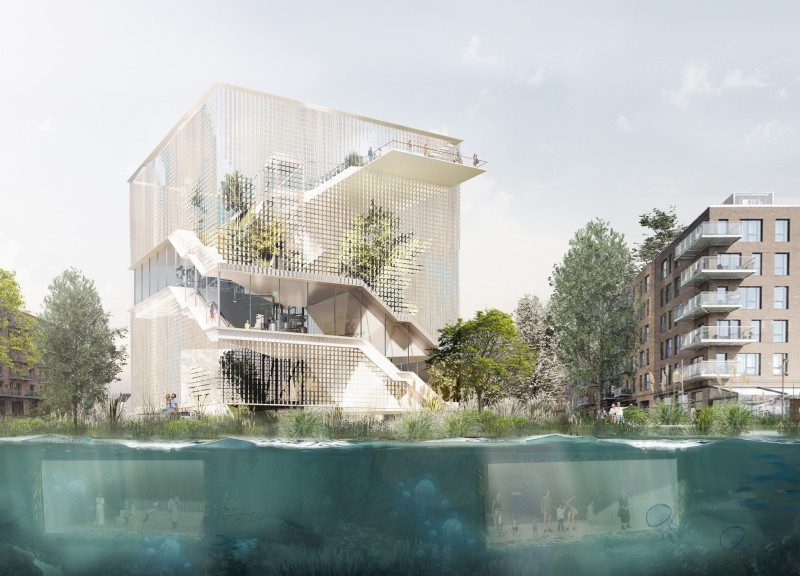5 key facts about this project
The overall architectural design reflects a commitment to sustainability and innovation. The facade utilizes a combination of natural materials, such as locally sourced stone and responsibly harvested wood, which not only enhance the visual appeal but also establish a connection with the surrounding landscape. Large, strategically placed windows optimize natural light, reducing the need for artificial lighting and fostering a welcoming atmosphere. The scale of the structure is carefully calibrated to maintain harmony with adjacent buildings, integrating seamlessly into the urban fabric without overwhelming its context.
One of the unique design approaches in this project is the incorporation of modular spaces that can adapt to various activities. This flexibility encourages diverse usage scenarios, from hosting community events to providing quiet working areas. The design integrates open floor plans with movable walls, allowing for dynamic reconfiguration based on user requirements. This adaptability not only enhances the functionality of the space but also reflects an understanding of evolving contemporary lifestyles.
Landscaping plays an essential role in the project, with outdoor areas designed as extensions of the interior spaces. Green terraces, native planting, and seating areas provide natural refuges that invite users to engage with nature. This design decision demonstrates the architects' acknowledgment of the importance of outdoor spaces in urban environments, providing users with areas for reflection, relaxation, and recreation.
Another significant aspect of the architecture is its energy efficiency measures. The building employs a range of sustainable technologies, including solar panels and a rainwater harvesting system, which collectively reduce the building's carbon footprint and operational costs. These features not only align with global standards for sustainable architecture but also serve as instructional elements for visitors, showcasing responsible design practices in action.
The project thoughtfully navigates the balance between modernist architectural principles and the cultural nuances of its location. By integrating local materials and design motifs that resonate with the regional identity, the architecture establishes a sense of place that is both rooted and progressive. The design embraces simplicity while ensuring every part serves a purpose, from the layout of hallways that facilitate movement to the inclusion of spaces that promote social interaction.
Furthermore, the project is a representation of the community's aspirations, reflecting a vision where public architecture serves both functional and cultural needs. Its presence encourages a sense of belonging and pride among residents, demonstrating how thoughtful design can foster community spirit.
For those intrigued by the architectural nuances and detailed design strategies employed in this project, exploring architectural plans, architectural sections, and broader architectural ideas will provide a comprehensive understanding of its underpinnings and aspirations. Dive deeper into the presentation of this project to appreciate how architecture can create spaces that enrich everyday experiences and foster lasting connections.


 Laura Rodriguez Celin,
Laura Rodriguez Celin,  Leonardo Pablo Galtieri
Leonardo Pablo Galtieri 




















